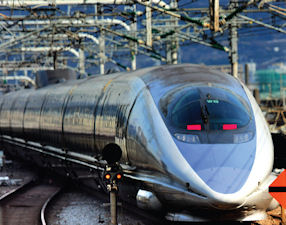From the very beginning, California’s high-speed rail proposal has been fraught with exaggeration. In little more than 10 years, the promised system – from Anaheim through Los Angeles Union Station and the San Fernando Valley to San Francisco – has been scaled back from genuine high-speed rail to a slower system that will share operation with freight and conventional passenger trains over many miles of track near San Francisco and Los Angeles. The train would run along the Metrolink tracks from Santa Clarita to Union Station, with stops in Burbank and San Fernando or Sylmar. The scaling back, from high-speed rail to a slower “blended system” of both conventional and high-speed operation, was supposed to keep costs down. Yet, the estimated costs of building the system have more than doubled to over $68 billion. But it’s not just the speeds and runaway costs, California’s ridership estimates are also wildly optimisitic. Virtually all the high-speed rail systems in the world have gotten a major portion of their ridership from existing train riders in those regions. In California, there is no material base of train ridership from which to draw from. As a result, the California High-Speed Rail Authority (CHSRA) assumes that three-quarters of its ridership will be people who choose the train over their cars. However, the world’s existing high-speed rail lines have largely failed to attract large shares of riders away from automobiles because people who use cars for trips like San Fernando Valley to San Francisco are usually far more concerned about costs than they are about time. Based upon the international experience in luring drivers out of their cars and onto trains, our new Reason Foundation study shows the California rail system’s ridership will fall 65 percent to 77 percent short of the Rail Authority’s current claims. The Rail Authority is also exaggerating its ability to produce the travel time – two hours and 40 minutes – that state law requires between Los Angeles Union Station and San Francisco. The blended tracks are part of the problem. So too is the route, which cuts through many populated areas. In order to claim they’ll make the travel time promised to voters, the Rail Authority alleges that its average operating speed between Bakersfield and Gilroy, just south of San Jose, will exceed the average operating speeds of every train in the world. California’s train is unlikely to run faster than others across the world because it faces serious challenges in mountain crossings and, unlike European and Chinese systems, it would run through, rather than around, many cities. Many communities are unlikely to stand for trains blowing through their neighborhoods at speeds between 100 and 200 miles per hour. Our Reason Foundation analysis uses realistic travel speeds based on existing rail systems and finds the fastest nonstop travel time from Los Angeles to San Francisco will likely be three hours and 50 minutes. Then there’s the not-so-small matter of needing another $50 billion. The Rail Authority optimistically assumes that the federal government and private investors will provide the $50 billion still needed to build the blended system. However, with massive federal debt and the project’s growing unpopularity, additional funding from the federal government seems improbable at best. Further, the rail line is unlikely to produce the profits that would be required to attract private investors. If the rail system is built in accordance with current plans, travel times would be slower than promised and ridership numbers would be lower than predicted. As a result, the California high-speed rail system would lose money and require day-to-day operating subsidies from California taxpayers of $125 million to $373 million each year. History tells us the high-speed rail system’s costs will continue to rise dramatically and ridership estimates will continue to fall. If the system is built, taxpayers will be stuck paying hundreds of millions of dollars a year in losses. Californians would be best served by cancelling the project. Wendell Cox served three terms on the Los Angeles County Transportation Commission (a predecessor of the MTA.) Joseph Vranich is the former president of the High Speed Rail Association. They are authors of a new Reason Foundation analysis of the California High-Speed Rail Authority.
